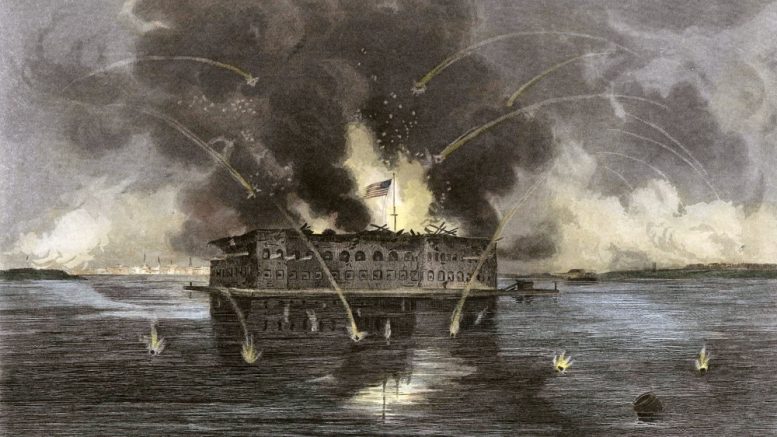By Scott Thomas Anderson
“I’m really interested in the point where you sort of turned to history,” journalist Evan Ratliff asked Erik Larson during a 2015 interview, probing why the two writers no longer shared a profession. “Was there an epiphany there where you said, ‘I actually don’t want to interview live people anymore?’”
“Yeah,” Larson replied, “I much prefer dealing with the Dead.”
I’m sure a lot of reporters have had that thought, but very few have walked away from the mainstream action and steered their narrative powers into the archival world of past lives. Even fewer have been able to convert forgotten letters, abandoned journals and tucked-away documents into stories that are simply entrancing.
“Isaac’s Storm” showed audiences that Larson was learning how to do this as far back as 1999, when it was clear that his obsessive research in the paper morgue was somehow necromancing three-dimensional characters onto the page. In 2003, when Larson released “Devil in the White City,” many readers agreed that he’d stepped his game up, deftly channeling established historic events into an epic, illuminative, page-turning mystery. I remember the owner of a crime-themed bookstore mailing me a hardback of “Devil in the White City” that year. She’d added with it a note that read, “It’s not fiction, but it is more gripping than almost any novel I’ve read in a while.”
I cracked the covers and instantly agreed.
A number of tomes followed. Larson’s “Dead Wake” was particularly captivating. That story revisits the sinking of the Lusitania off the coast of Ireland just before World War I. The book was released in 2015 when I happened to be exploring southwestern shorelines near where it all happened. I was able to turn the last page of “Dead Wake” in Kinsale, a town where some of the bodies from the Lusitania were buried after they washed up in the waves. Reading Larson’s story on that trip made for contemplative moments, especially because he knows how to make lost voices speak through time.
But the author’s new release, “The Demon of Unrest,” might be his best effort in a while. If nothing else, politically-minded readers will find it to be a salient experience for our current moment. Larson decided to go back 163 years and float his narrative through the months, days, hours and minutes leading up to the Confederates firing on Fort Sumter. Those events in 1861 set off a bloody spiral of carnage that’s never been equaled in American history – and Larson has found new prisms to view it through.
It’s true that much has been written about the causes of the Civil War. However, prior to “Demon of Unrest,” a lot of this enormous body of work hasn’t focused on the first trigger-pull itself – on the literal and metaphoric flashpoint that took both sides across the Rubicon.
Larson is a uniquely suited writer for the job, and that’s because he cares so much about the emotional life of the Dead. In this case, by penetrating the mindsets of Fort Sumter’s commander, Major Robert Anderson, and his opponent, the general of southern forces in Charleston, P. G. T. Beauregard, Larson draws a picture of two men caught between their commitments and loyalties and the dire gravity of contemplating what it would mean to draw American blood from a proverbial brother (Anderson and Beauregard themselves were friends from West Point Military Academy).
Larson also highlights the psychology of a few key successionist agitators, without romanticizing them in any way, in order to provide fresh insights into the position that Abraham Lincoln found himself in as he took office. Perhaps the most intriguing and entertaining aspect of “Demon of Unrest” is Larson’s use of dialog, which is taken directly from letters and journals of the moment. These exchanges speak to how preternaturally obsessed both sides in Charleston were with concepts of personal and national honor. The battle of Fort Sumter was almost averted several times simply because one side or the other refused to take any action against their opponent that could be viewed as unfair, cowardly or opportunistic in a way that undermined personal dignity.
And yet, as we know, the firefight did eventually happen.
And what followed were events like the Battle of Shiloh, the Battle of Antietam and the Battle of Gettysburg – clashes that would contribute to 620,000 Americans dying at the hands of one another on their own soil. Larson’s “Demon of Unrest” is an example of how stellar writing can help us better meditate on the human side of destiny.
Scott Thomas Anderson is also the writer and producer of the ‘Drinkers with Writing Problems’ podcast.


Be the first to comment on "Countdown to carnage: Erik Larson’s new book ‘Demon of Unrest’ is a haunting reflection on the momentum of violence"